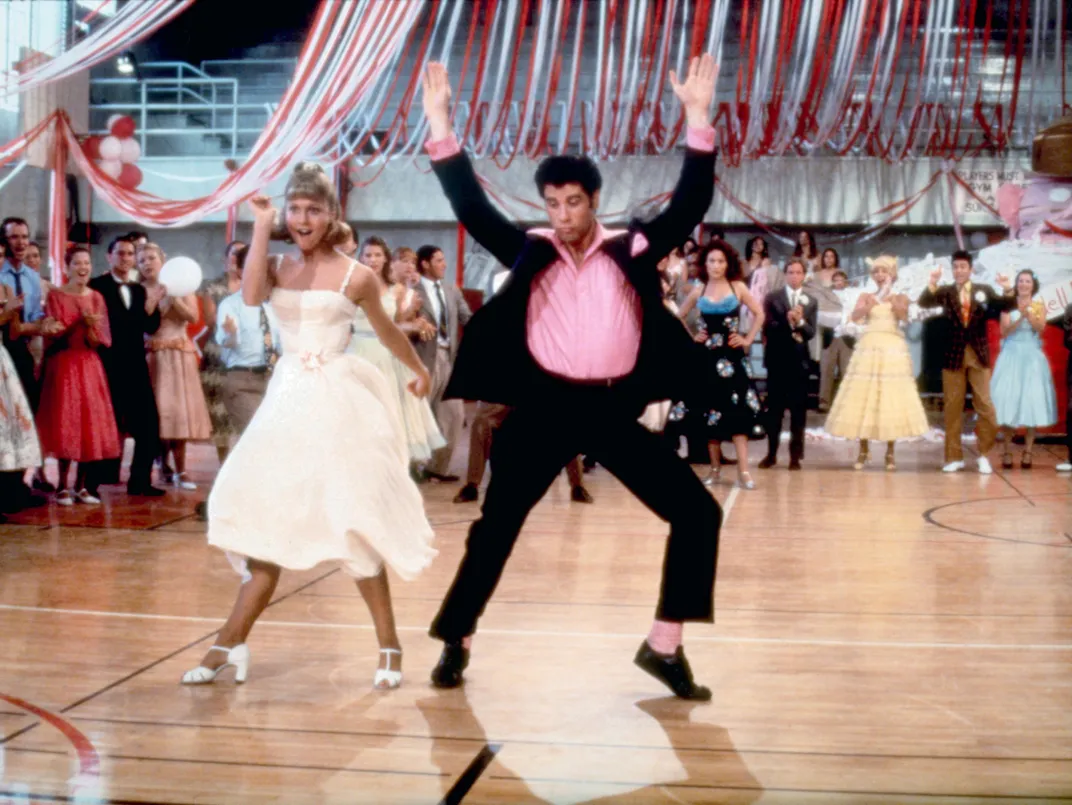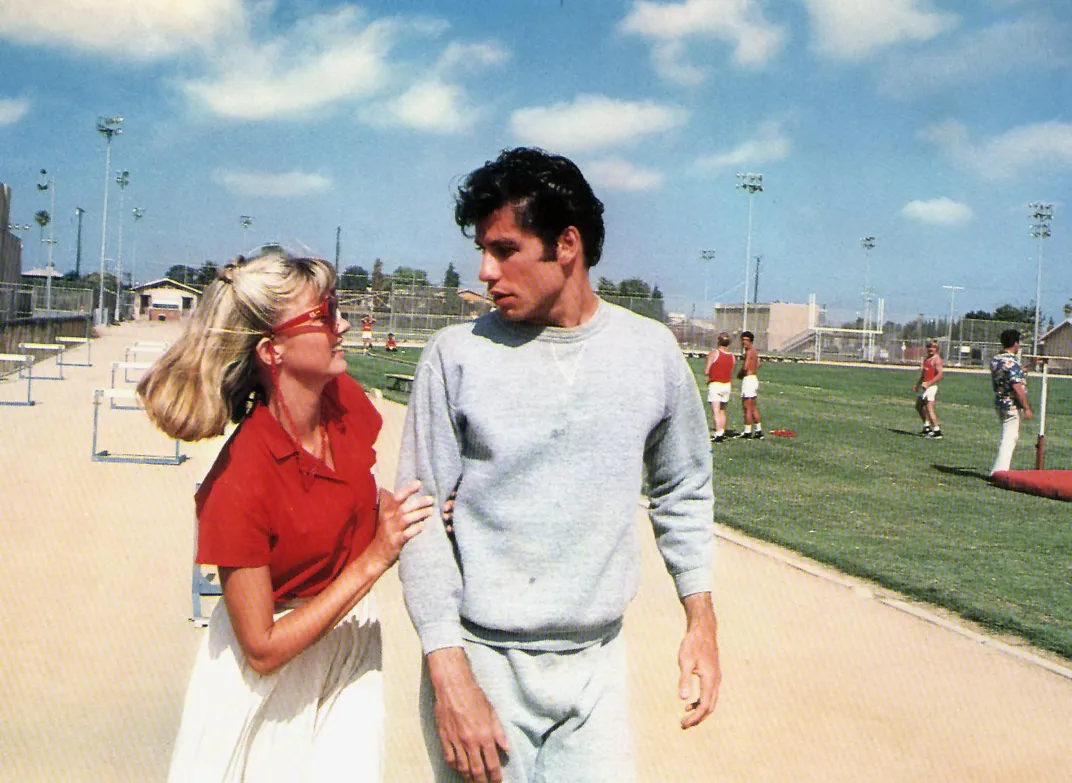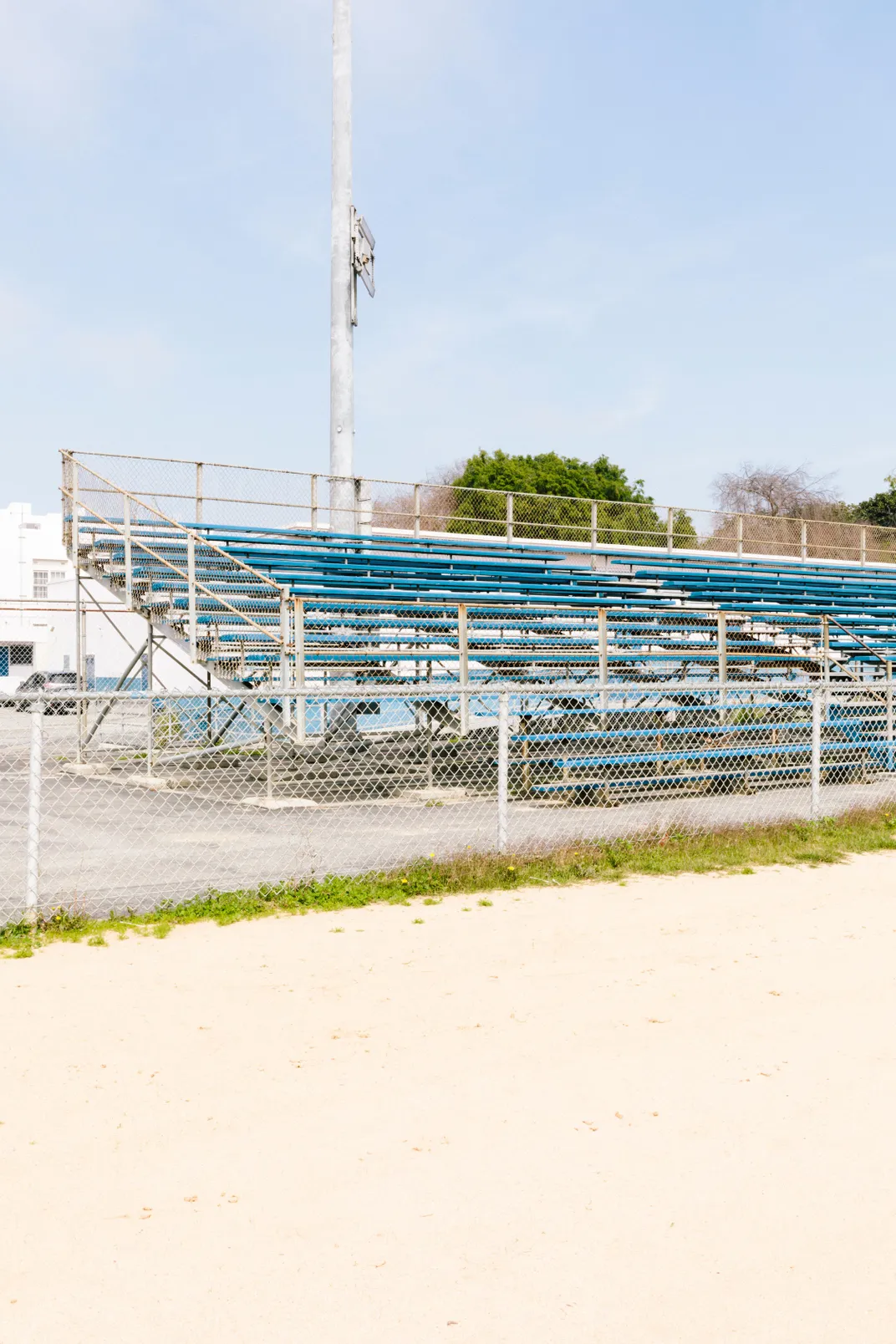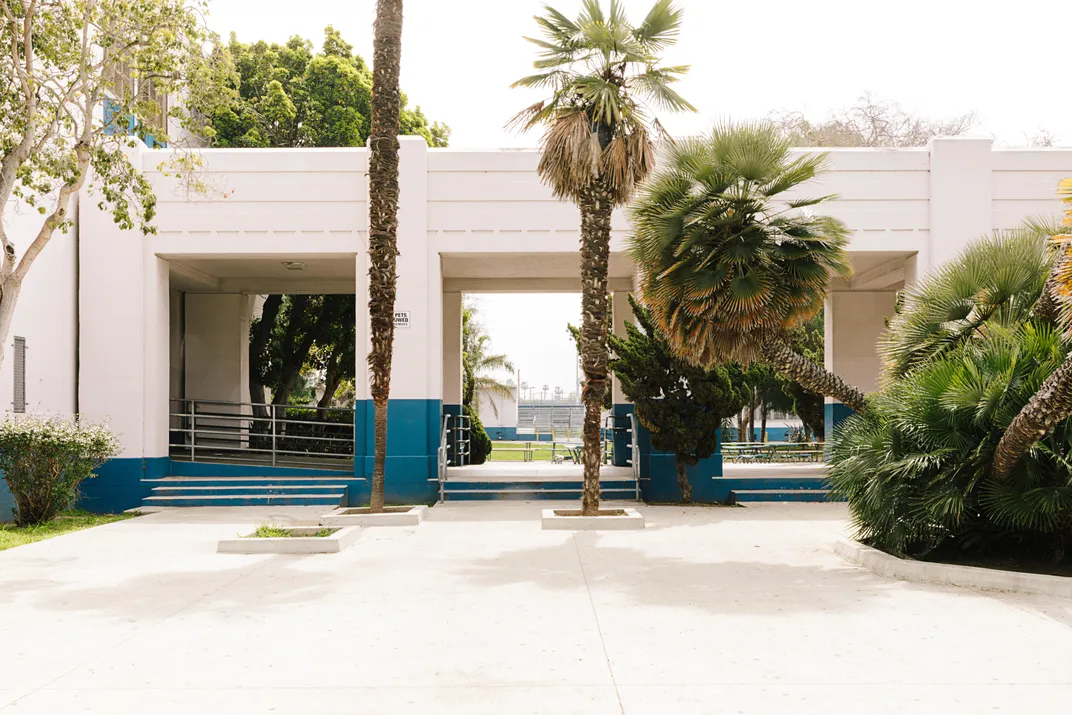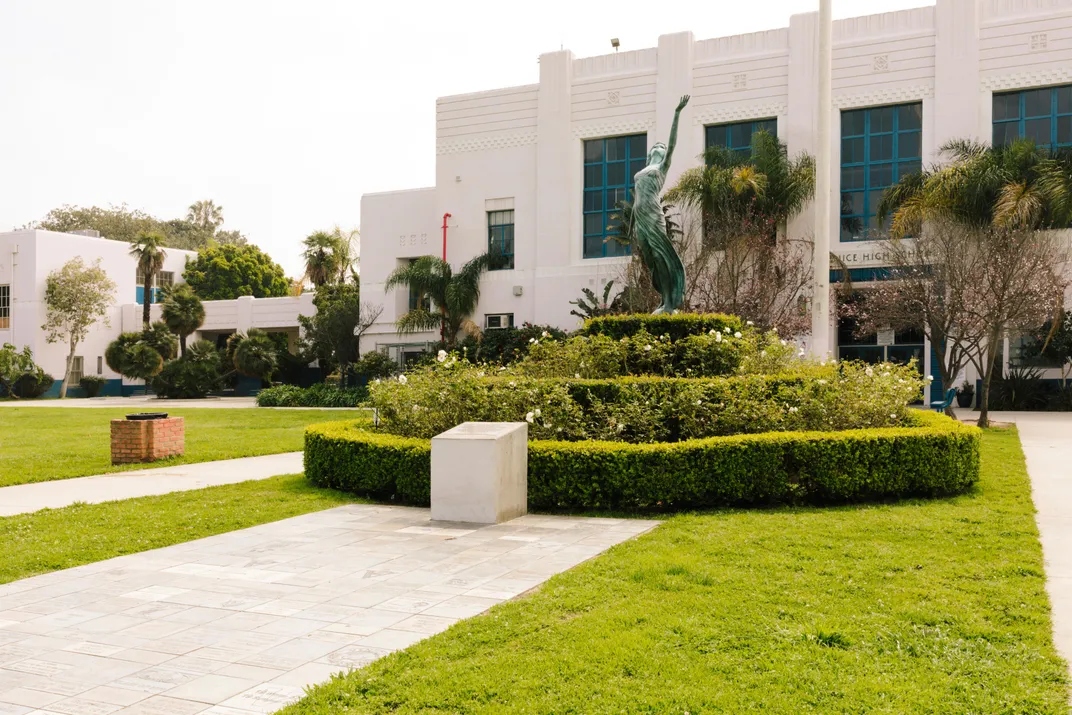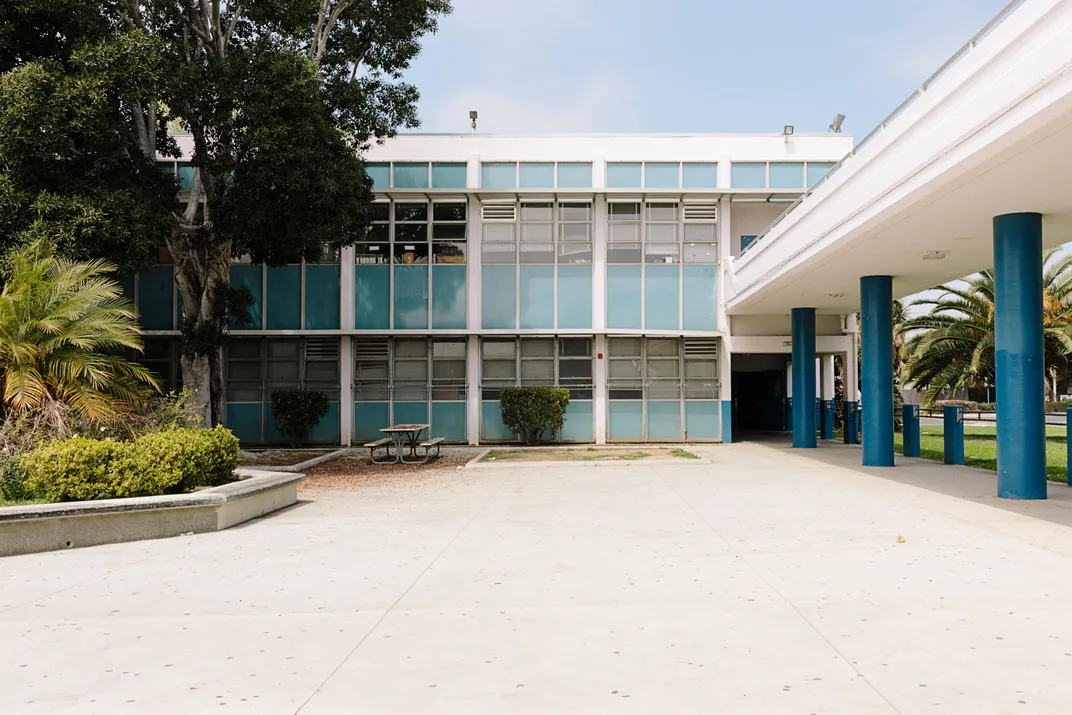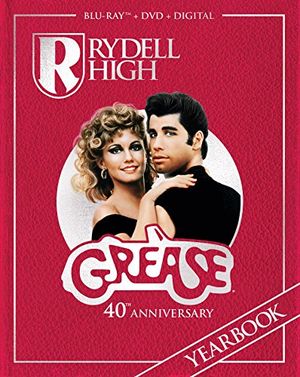Get Schooled on the History of Where ‘Grease’ Was Really Filmed
Tell me about it, stud
/https://tf-cmsv2-smithsonianmag-media.s3.amazonaws.com/filer/3c/e2/3ce225f9-ed6c-40a3-9c6d-3fbb7b49fd2e/jun2018_b04_prologue.jpg)
“You’re going to be really surprised by the one I pick,” John Travolta said when I asked him which of his films he’d store in a time capsule. It was 1996, and I was writing about the star of Saturday Night Fever, Urban Cowboy, Pulp Fiction and Get Shorty. He would have good cause to choose any of those. But no. “I’m going for the one that would give the most therapeutic value to the future, and that would be Grease,” Travolta said. “It’s amazing the joy level that it gives new kids, old kids, for generations, you know?”
One generation’s joy can be another generation’s torment, but the kitschy musical about a 1950s high school featuring Travolta as lovable greaser Danny opposite Olivia Newton-John as good girl Sandy and Stockard Channing as racy Rizzo, remains infectiously popular 40 years after its debut. More than 12 million viewers caught Fox’s Grease: Live in 2016, and a ticket to the annual Hollywood Bowl Grease Sing-A-Long can cost the hopelessly devoted $600.
At 17 I saw the film five times the week it opened, so as I pull up to west Los Angeles’ Venice High School it’s hard not to get goose-bumpy. Palm-fringed Venice High’s circa-1935 Art Deco facade is familiar to decades of moviegoers. A Nightmare on Elm Street and American History X, among others, were both filmed here, as was Britney Spears’ “...Baby One More Time.” But Grease was the word that made the school famous.
The movie began shooting on the Venice campus in the summer of ’77. The first shot of the school captures the anxious excitement of kids on the first day, pouring out of their cars and crossing the lawn. They pass a white plaster statue—the actress Myrna Loy, who, when she modeled for her art teacher in 1921, was 16-year-old Myrna Williams. “We planted these rose bushes around her to keep rival kids from coming over and painting her their school colors,” says Grant Francis, president of the alumni association, as he shows me the lithe figure, now cast in bronze. “That was a tradition.”
Francis taught wood shop and technical theater at the high school at the time of the filming. In fact, he and his students installed the Rydell High School sign that covered up the Venice High School sign above the front doors. It hung in his classroom until he retired in 2001, when he auctioned it off to start a scholarship program. “It sold for a lot,” says Francis, now a youthful 76 with a shaved head, a white goatee and smiley blue eyes.
The lunch bell rings. Doors fly open and chattering students fill the expanse of the front lawn, carrying skateboards, backpacks, band instruments—all with smartphones in their free hands. The pink-bowed cheerleaders carry blue tinsel pompoms, their miniskirts far shorter than the “cheer squad” uniform Newton-John’s Sandy wore at the Rydell pep rally.
Francis leads the way between the breezeway columns Channing circled as she sang Rizzo’s ballad “There Are Worse Things I Could Do.” On the other side is the track and football field where Travolta and the T-Birds sang and strutted the bleachers for the film’s big duet, “Summer Nights.” “Travolta ends the song at the top in a pose like this,” Francis says, cocking his hip and pointing his arm in the air. “So many kids get in that place and have their picture taken like that. We get people from all over the world.”
Newton-John sang her part of “Summer Nights” with the Pink Ladies amid a cluster of lunch tables, which were replaced shortly after filming. The whole seating area will soon be a casualty of a modernization project. Construction trucks fill the area, along with the sound of hammers and drills sending dust into the air. “It’s a good thing you’re here now,” says Assistant Principal Frank Nunez. “In another year nothing’s going to be left of the film’s locations.”
**********
In the canon of high-school musical movies—West Side Story, Bye Bye Birdie, Fame, Hairspray—the cheese that is Grease stands alone. The highest-grossing film of 1978, it topped Superman and National Lampoon’s Animal House, despite middling to scathing reviews—a “klutzburger,” the critic Pauline Kael said.
The public ate it up in large part due to the stunner in the center of it all. “I honestly think it was John and the dancing, because it is still so staggering to watch,” says Dinah Manoff, who played Marty Maraschino. Travolta, 23 in the movie, was already major crush material thanks to the TV series “Welcome Back, Kotter,” the movie The Boy in the Plastic Bubble and of course Saturday Night Fever, which opened the previous December. “That first time when he turns around at the school, with that cigarette hanging out of his mouth? Every little girl in the whole world and some little boys, too, went”—she gasps. “It was breathtaking.”
Didi Conn, who played Frenchy, the beauty-school dropout, says “Grease is about firsts—first love, first car, first heartache. That has a very special energy to it. And don’t forget, this was a time, too, before music videos. Grease was one long music video.”
What accounts for the movie’s popularity today? Call it nostalgia nostalgia, a very American longing for a simpler time as it was remembered during a complicated time that looks, from our modern vantage point, pretty uncomplicated after all. “It’s the ultimate look at a peaceful time when the most important thing was who you were going to invite to the prom and what kind of car you were going to drive,” says Randal Kleiser, the film’s director. “It’s the way we wish the ’50s were. Now the movie appeals to a lot of people because it’s from a time before mass shootings, stabbings; before social media.”
Alas, one of the great symbols of bygone better days is already long gone—the Pickwick Drive-In, in Burbank, where Danny and Sandy are sitting in his convertible when he makes a play for second base. It’s a shopping center now. As for the only-in-L.A. “Thunder Road” drag-race location—the Sixth Street Viaduct? Demolished. It had appeared in over 80 films, television shows, music videos and commercials every year, but when Los Angeles Mayor Eric Garcetti threw a farewell party for the landmark in 2015, the movie he chose to screen on the viaduct wall was Grease.
Grease on Blu-Ray
A musical about teens in love in the '50s! It's California 1959 and greaser Danny Zuko and Australian Sandy Olsson are in love. They spend time at the beach, and when they go back to school, what neither of them knows is that they both now attend Rydell High.
Rydell High’s televised dance competition was filmed over a five-day heat wave in the unairconditioned Huntington Park High School gym. “It was so, so hot and there was an abattoir nearby—a slaughterhouse—and the sweat and the smell was mingling,” Newton-John recalls with a laugh. Forty years later, the Farmer John pork-processing plant, adorned with a mural of happy hogs, is still there.
The backdrop for the outdoor carnival scene also remains: Los Angeles’ John Marshall High School, where Rebel Without a Cause was filmed. (Newton-John still has the black skintight outfit that turned Sandy into a good girl gone bad in a great way. She will be auctioning it off to benefit the Olivia Newton-John Cancer Wellness & Research Centre.) But Venice High will always be the faux real Rydell, and the school celebrates the distinction every September with a Grease party on the football field.
“Last year over 800 people came,” Francis says. A movie screen stands at the 30-yard line, a ’50s band plays at midfield, and students wearing poodle skirts and leather jackets jitterbug and swing and do the hand jive. At dusk, the band stops, the movie starts, and hundreds of Grease lovers sing and dance their hearts out. The Grease Lightning car even makes an appearance. Owned by the Petersen Automotive Museum, it arrives on a big truck. “It doesn’t run,” Francis says, “but it still looks cool.”
A Note to our Readers
Smithsonian magazine participates in affiliate link advertising programs. If you purchase an item through these links, we receive a commission.
